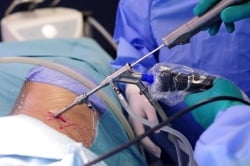Spinal disorders, frequently emerging subtly within the context of contemporary sedentary lifestyles, often manifest with symptoms easily mistaken for routine muscle strain. Mild back or neck pain is commonly attributed to poor posture, insufficient physical activity, or occupational strain. While these factors can indeed contribute to discomfort, persistent or escalating symptoms necessitate a thorough evaluation by a spine specialist to rule out more serious underlying conditions. Early intervention is crucial in preventing long-term complications, especially in cases involving nerve compression, degenerative disc disease, or spinal instability, thus distinguishing temporary discomfort from potentially debilitating pathology.
One primary indicator of a potentially significant spinal issue is pain that persists despite conservative treatments. If back or neck pain continues for several weeks despite rest, physiotherapy, medication, or changes in activity, further investigation is warranted. Such persistent pain may signal structural abnormalities, such as disc herniation, spinal stenosis, or facet joint degeneration, requiring more targeted intervention than standard pain management strategies can provide. Differentiating between transient musculoskeletal pain and persistent pain suggestive of structural damage is a critical step in directing appropriate care.
Radiating pain, another warning sign, often indicates nerve root involvement. Sharp, shooting pain extending from the spine into the extremities, such as the classic example of sciatica, suggests nerve compression or irritation. Sciatica, originating in the lower back and radiating down the sciatic nerve, frequently presents with accompanying tingling, numbness, or burning sensations. This distinctive pattern of radiating pain, coupled with sensory disturbances, necessitates specialist consultation as it typically doesn’t respond well to general pain management approaches. Recognizing and addressing nerve involvement early can minimize the risk of long-term neurological deficits.
Neurological deficits, even if seemingly minor, demand immediate attention. Symptoms like muscle weakness, diminished reflexes, impaired coordination, or difficulty balancing can signify escalating nerve dysfunction. Foot drop, characterized by difficulty lifting the front of the foot, is a clear indication of advanced nerve compression and should never be ignored. These neurological symptoms transcend mere discomfort and point to potentially serious and progressive nerve damage. Prompt evaluation and intervention can prevent further deterioration and potentially irreversible consequences.
Changes in bladder or bowel habits, particularly in conjunction with lower back pain, represent a serious red flag. Loss of control, urinary retention, or sudden constipation could indicate cauda equina syndrome, a rare but critical condition requiring immediate surgical intervention. Delaying treatment in such cases can lead to irreversible neurological damage, including paralysis and permanent incontinence. The combination of lower back pain and bowel/bladder dysfunction necessitates urgent medical attention to avert potentially catastrophic outcomes. This underscores the importance of not dismissing seemingly unrelated symptoms when experiencing back pain.
The insidious nature of many spinal disorders necessitates proactive vigilance. Many pathologies develop gradually over time due to repetitive strain, prior injury, or degenerative changes. By the time significant symptoms manifest, damage to spinal structures and surrounding nerves may already be substantial. Early assessment by a spine specialist can identify these issues in their nascent stages, enabling interventions that prevent further deterioration. This proactive approach can significantly alter the course of the disease, mitigating the extent of damage and promoting more effective recovery. Early diagnosis often translates to less invasive treatment options and better long-term outcomes. While consulting a spine surgeon may seem daunting, it doesn’t automatically equate to surgery. The primary goal of most specialists is to explore non-operative treatment modalities whenever feasible.
Conservative management options encompass a range of approaches, including physiotherapy, ergonomic adjustments, guided injections, pharmacological therapy, and structured rehabilitation programs. Surgery is typically reserved for cases where conservative measures prove ineffective or when the underlying condition poses a significant risk of permanent neurological compromise. The focus remains on restoring function and minimizing invasive procedures whenever possible. A practical guideline for patients is to assess the impact of spinal symptoms on daily life. Pain or discomfort affecting work, mobility, sleep, or overall quality of life warrants further evaluation. Seeking specialist input at this stage expands therapeutic options, many of which are minimally invasive and prioritize functional restoration.
The spine’s pivotal role in posture, movement, and neurological integrity demands that symptoms affecting the back, neck, or extremities be treated with clinical diligence. Early recognition of warning signs and consultation with a qualified spine specialist significantly influence outcomes, reducing the risk of chronic disability and facilitating faster, more complete recovery. Ignoring symptoms can lead to more complex and challenging treatment paths later on.
The emphasis on early intervention in spinal health cannot be overstated. Individuals experiencing unresolved pain, radiating symptoms, weakness, or bowel/bladder changes should seek expert evaluation without delay. In spinal care, timely intervention is paramount in determining the trajectory of recovery and long-term well-being.
In conclusion, spinal health requires proactive attention and a nuanced understanding of symptoms. While many instances of back pain resolve with conservative measures, persistent or escalating symptoms necessitate prompt evaluation by a spine specialist. Early intervention, encompassing a spectrum of non-operative and surgical approaches, can significantly mitigate the risk of long-term complications and pave the way for a more complete recovery. Recognizing the subtle early warning signs and seeking timely expert guidance can profoundly impact the course of spinal disorders and preserve overall quality of life. The key message is that early intervention is the most effective strategy in managing spinal health and preventing debilitating consequences.


